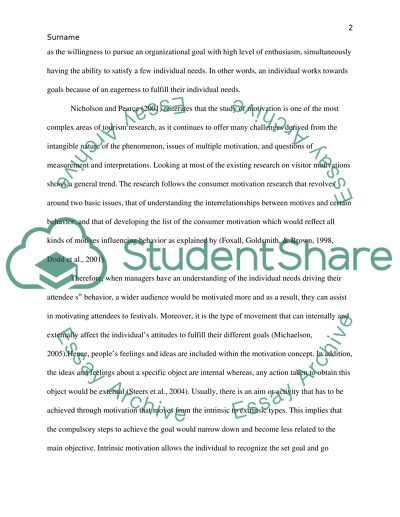Cite this document
(“PAPER SUBJECT*: EVENTS MANAGEMENT/TOURISM: Interim report - The Literature review”, n.d.)
PAPER SUBJECT*: EVENTS MANAGEMENT/TOURISM: Interim report - The Literature review. Retrieved from https://studentshare.org/tourism/1624589-paper-subject-events-managementtourism-interim-report-the-motivation-to-attend-music-festivals-notting-hill-carnival
PAPER SUBJECT*: EVENTS MANAGEMENT/TOURISM: Interim report - The Literature review. Retrieved from https://studentshare.org/tourism/1624589-paper-subject-events-managementtourism-interim-report-the-motivation-to-attend-music-festivals-notting-hill-carnival
(PAPER SUBJECT*: EVENTS MANAGEMENT/TOURISM: Interim Report - The Literature Review)
PAPER SUBJECT*: EVENTS MANAGEMENT/TOURISM: Interim Report - The Literature Review. https://studentshare.org/tourism/1624589-paper-subject-events-managementtourism-interim-report-the-motivation-to-attend-music-festivals-notting-hill-carnival.
PAPER SUBJECT*: EVENTS MANAGEMENT/TOURISM: Interim Report - The Literature Review. https://studentshare.org/tourism/1624589-paper-subject-events-managementtourism-interim-report-the-motivation-to-attend-music-festivals-notting-hill-carnival.
“PAPER SUBJECT*: EVENTS MANAGEMENT/TOURISM: Interim Report - The Literature Review”, n.d. https://studentshare.org/tourism/1624589-paper-subject-events-managementtourism-interim-report-the-motivation-to-attend-music-festivals-notting-hill-carnival.


